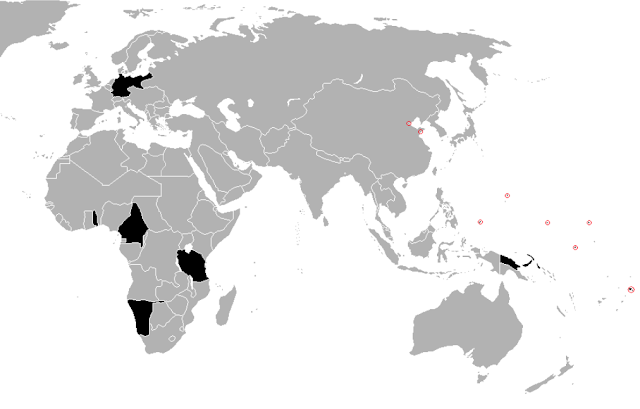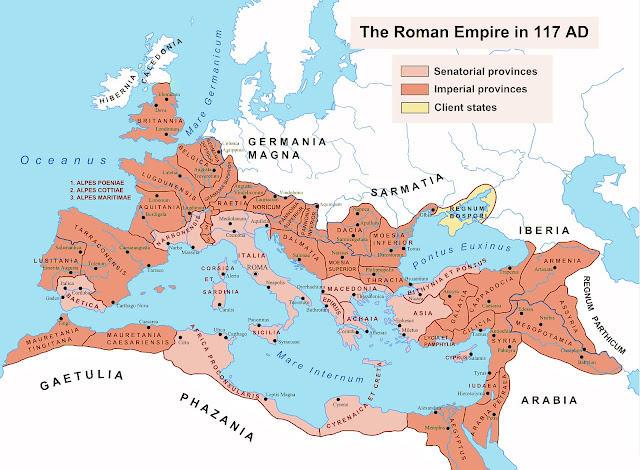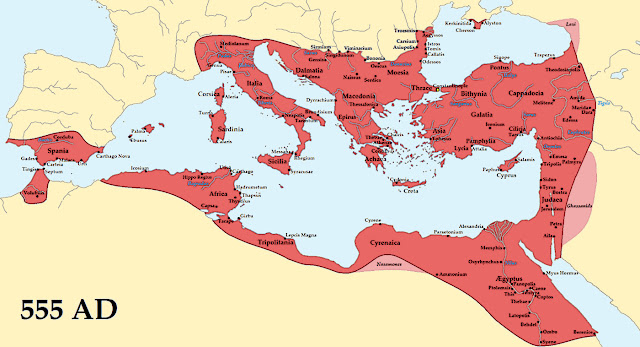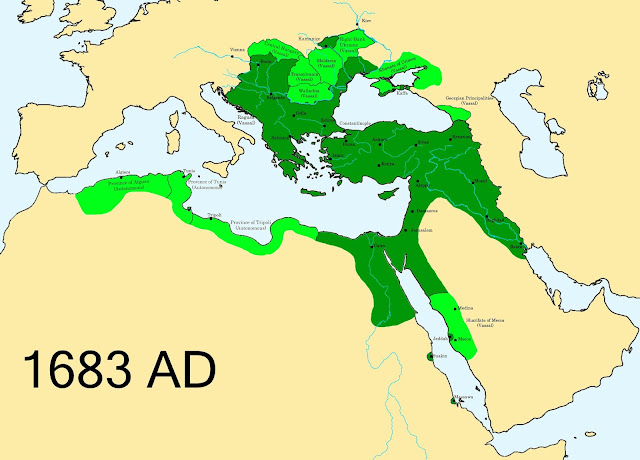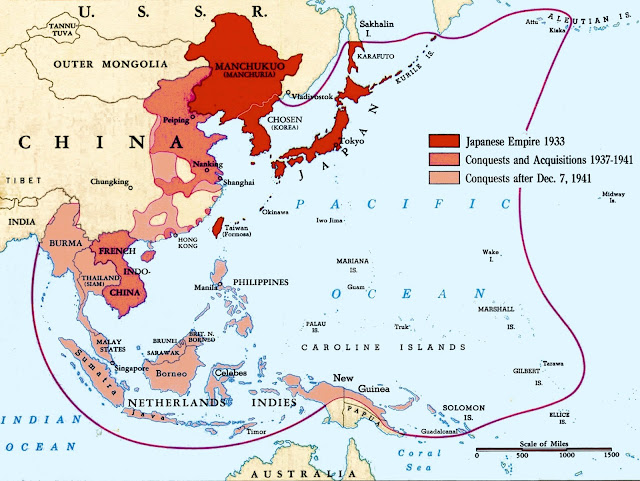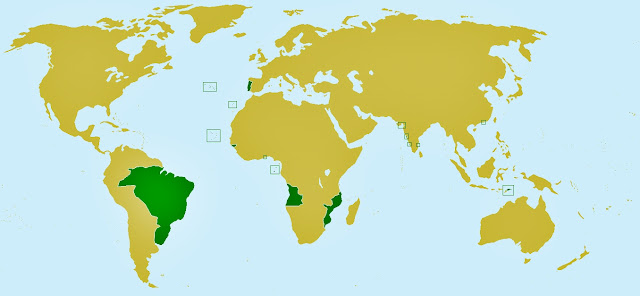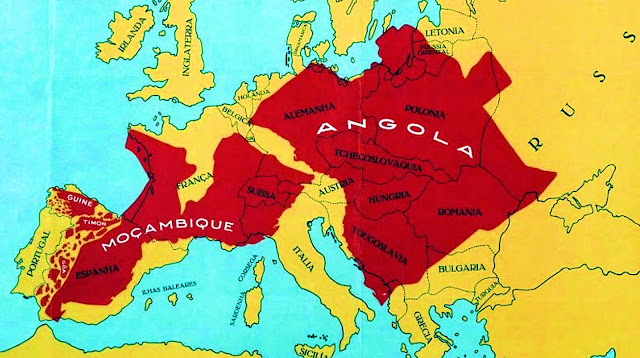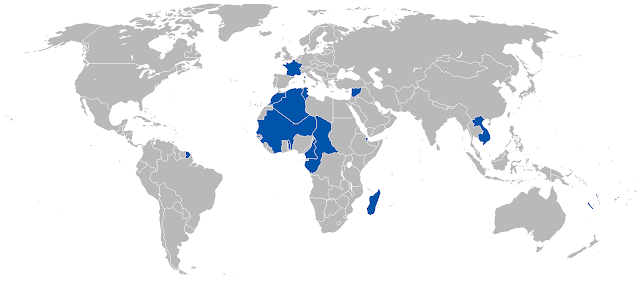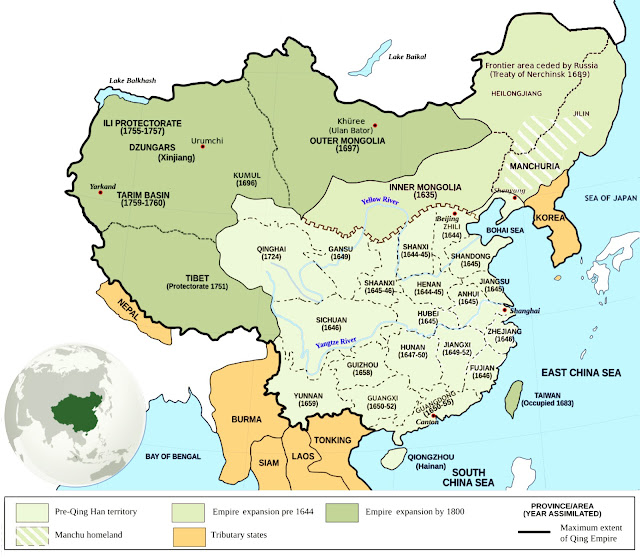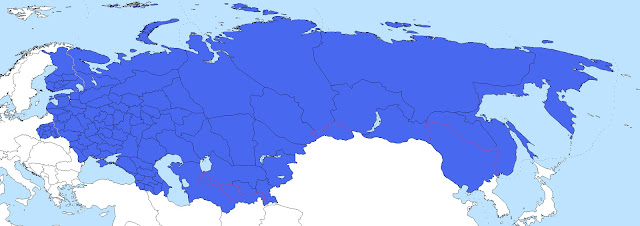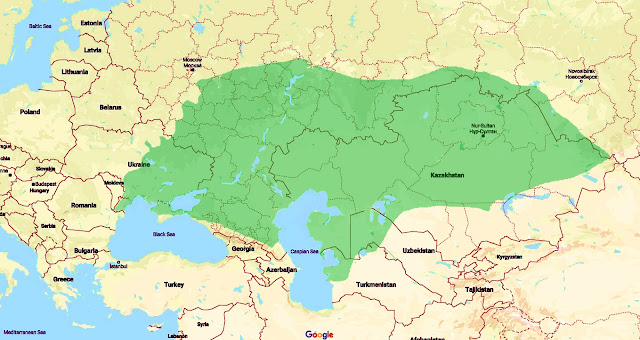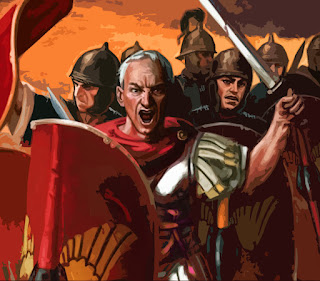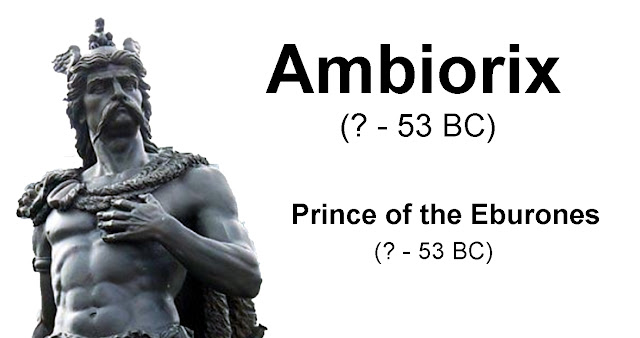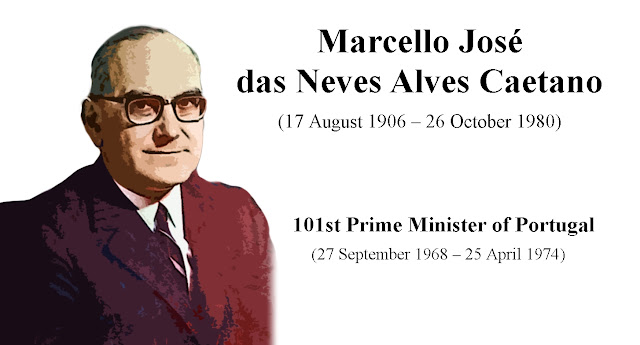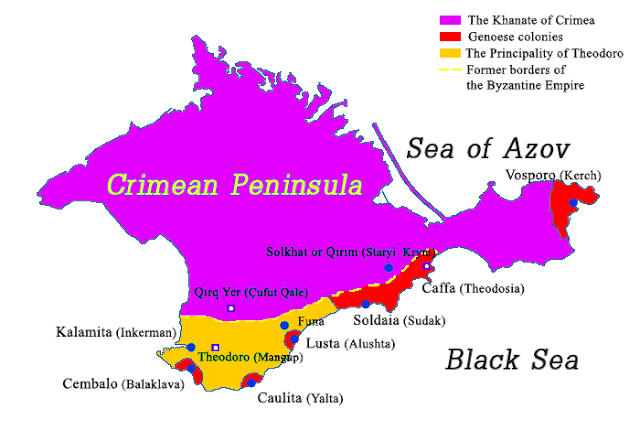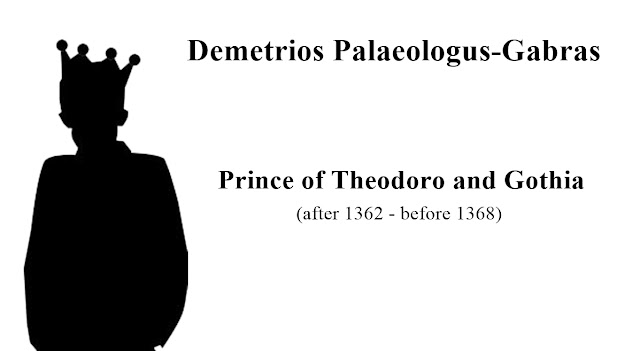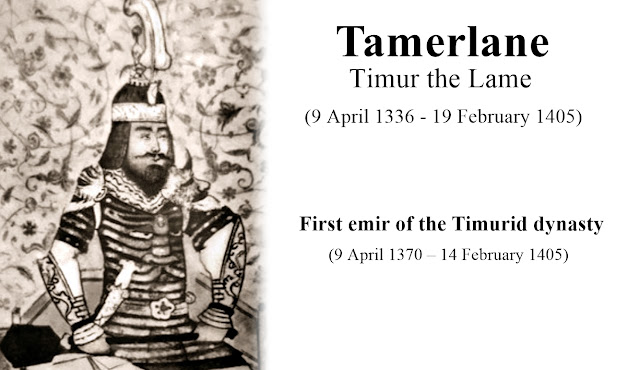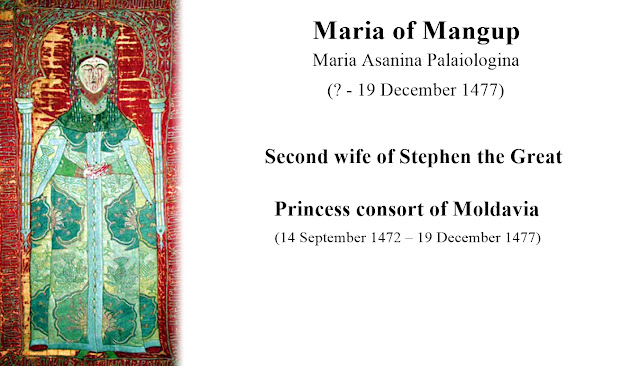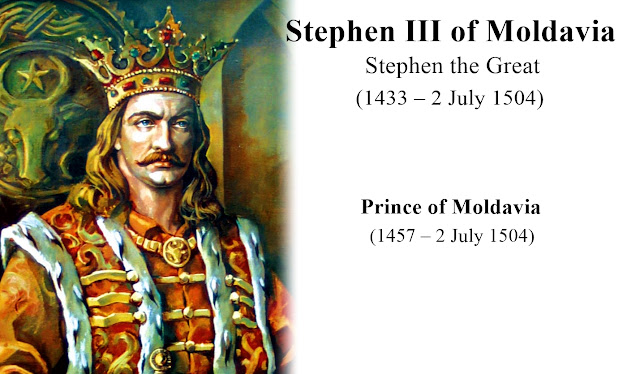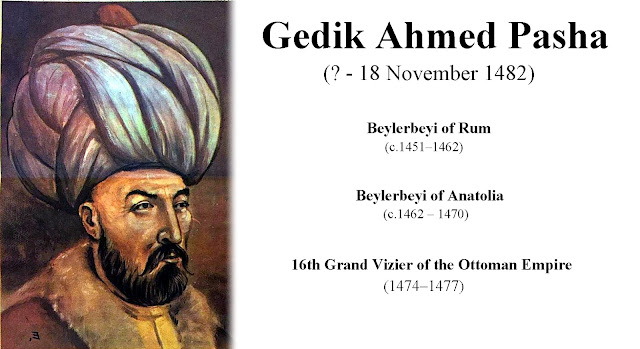This is the list of the top 15 largest empires by land area at their greatest extent.
Number 15:
The German colonial empire, before the start of the First World War, with a surface of 3.2 million km2.
Also known as the "Second Reich", It was founded on 1 January 1871 when the south German states, except for Austria, joined the North German Confederation. The German colonial empire included Germany, Cameroon, Namibia, Tanzania, German New Guinea, and some islands in the Pacific Ocean.
During the Second World War, at its greatest extent, in November 1942, the Third Reich, with a surface of 3.6 million km2 was bigger than The German colonial empire, but it lasted for a very short time.
Number 14:
The Italian Empire, in the spring of 1941, with a surface of 4.2 million km2. Although they had a much weaker army than the Germans, the territory controlled by the Italians during World War II was larger. Outside Italy, in Europe, they owned Albania, the Dalmatian coast, western Greece, and in Africa, Libya, Somalia and Ethiopia, along with other smaller territories. By the autumn of 1943, the Italian Empire disappeared, after the allies occupied their territories in Africa, and the southern half of Italy.
Number 13:
The Mughal Empire, at the beginning of the 18th century, with a surface of 4 million km2, and a population of 160 million people. The Mughal Empire is conventionally said to have been founded in 1526 by Babur, a warrior chieftain from Central Asia. At its greatest extent, it was one of the largest empires in the history of South Asia, stretching from northern Afghanistan in the northwest, to Bangladesh in the east, and the Deccan plateau in the South. The empire subsequently fragmented after 1720, and was dissolved by the British Raj after the Indian Rebellion of 1857.
Other great empires that had their center in India were the Maurya Empire, with a surface of about 4 million km2 around the year 250 BC, and the Delhi Sultanate with a surface of about 3.2 million km2 around the year 1330.
Number 12:
The Roman Empire, at the death of emperor Trajan in 117 AD, with a surface of 5 million km2, and a population of 60 million people. The Roman Empire was the only state that held all the territories around the Mediterranean Sea, this sea being called "Mare Nostrum" (Our Sea).
After the death of Emperor Theodosius in 395, the empire was permanently divided between his sons Arcadius and Honorius, in the Western Roman Empire and the Eastern Roman Empire.
The Western Roman Empire collapsed in 476, while the Eastern Roman Empire was transformed into the Byzantine Empire, reaching its maximum territorial expansion in 555, during the reign of Justinian I.
Number 11:
The Ottoman Empire, before the Siege of Vienna in 1683, with a surface of 5.2 million km2. This empire controlled much of Southeast Europe, Western Asia and North Africa between the 14th and early 20th centuries.
Apart from the Ottoman Empire, the Turks built other lesser-known empires, such as the Göktürk Khaganate, with a surface of about 6 million km2 around the year 570 BC, and the Seljuk Empire, with a surface of about 3.9 million km2 , upon the death of sultan Malik Shah I in 1092.
Number 10:
The Achaemenid Empire, during the reign of Darius I, with a surface of 5.5 million km2. This Persian Empire, ranging at its greatest extent from the Balkans in the west to the Indus Valley in the east, was a successful model of a centralised, bureaucratic administration.
Most of the empire was conquered by Alexander the Great by 330 BC. Alexander's empire at his death in 323 BC had a surface of about 5.2 million km2. A Neo-Persian Empire under the Sassanid dynasty has reached a surface of 3.5 million km2 around 620 AD.
Number 9:
The Empire of Japan in 1942 with a surface of 8.5 million km2. Japan was a great power after the Meiji Restoration in 1868. Victories over China and Russia expanded the Japanese sphere of influence, notably in Taiwan, Korea, and southern Sakhalin island. With the Japanese expansion into Manchuria in the early 1930s, Japan adopted a policy of setting up puppet states in conquered regions. Japan controlled many of the states of what it referred to as the Greater East Asia Co-Prosperity Sphere, a concept which gradually formed under Japanese influence from 1930 to 1945.
Number 8:
The Portuguese Empire in 1820, with a surface of 10.4 million km2. The Portuguese Empire was the first global empire in history, after the capture of Ceuta in 1415. The empire's most valuable colony, Brazil, won its independence in 1822. After the First World
War, the empire reached a surface of 2.2 million km2, with Angola and Mozambique as its most important colonies. Following the Carnation Revolution in 1974, the empire's government recognized the independence of all its colonies in less than a year, except for Macau who was returned to China in 1999.
Number 7:
The second French colonial empire, after the First World War, with a surface of 11.5 million km2, and a population of 110 million people in 1939. The "second colonial empire", began with the conquest of Algiers in 1830, concentrating chiefly in Africa as well as Indochina and the South Pacific.
The "first French colonial empire," which existed until 1814, was much smaller, reaching its peak during the Seven Years' War in 1760 with a surface of 3.4 million km2.
Number 6:
The Arab Caliphate under the Umayyad dynasty in 750, with a surface of 13.4 million km2 . The Arab conquests began with the Islamic prophet Muhammad in the 7th century, who established a new state in the Arabian Peninsula. The Caliphate grew rapidly in territory, stretching from the Iberian Peninsula in the west to the Indus valley in the east, across Nord Africa and Middle East. After 850, the empire was fragmented into independent emirates, which were ruled for the next centuries by local dynasties.
Number 5:
The Chinese Empire, under the Qing dynasty at the end of the 18th century, with a surface of 13.5 million km2 and a population of 300 million people. The Qing dynasty was the last imperial dynasty of China, ruling the country from 1644 to 1911. During the peak of the Qing dynasty, the empire ruled over the entirety of today's Mainland China, Hainan, Taiwan, Mongolia, Outer Manchuria and Outer Northwest China.
Other dynasties under which the Chinese Empire reached considerable dimensions were Han dynasty around the year 100
AD (6.5 million km2), The Tang dynasty in 669 AD (10.8 million km2), the Yuan dynasty around 1330 (13.7 million km2), and the Ming dynasty around 1450 (6.5 million km2).
Number 4:

The Spanish Empire in 1790, with a surface of 15.8 million km2 and a population of 60 million people. After the discovery of America in 1492, Spain explored and conquered large tracts of territory on this continent. The Philippines, Marianas, Carolines, and small territories in Africa were also conquered. The American colonies were lost at the beginning of the 19th century, and the colonies in the Pacific in 1898.
Between 1580 and 1640 was a dynastic union of the Kingdom of Portugal and the Spanish Crown. The area of the territories claimed by the Spanish Empire during the Iberian Union was 26.9 million km2, but in reality, the area actually controlled was much smaller, only 7.1 million km2.
Number 3:
The Russian Empire around the year 1900, with a surface of 22.8 million km2 and a population of 135 million people. Russia became an independent state in 1480, during the reign of Tsar Ivan III, and a major European power during the reign of Peter the Great. At the beginning of the 20th century, the Russian Empire extended from the Arctic Ocean in the north to the Tien Shan mountains in the south, from the Polish Plains in the west to the Pacific Ocean, in the east. It lasted until it was declared a republic in March 1917 after the Russian Revolution.
The Soviet Union had a slightly smaller surface than the Russian Empire, 22.4 million km2 after the Second World War, and a population of 293 million people in 1991.
Number 2:
The Mongol Empire in 1309, with a surface of 24 million km2. It emerged from the unification of several nomadic tribes in the Mongol homeland under the leadership of Genghis Khan, and it expanded from Central Europe in the West, to Pacific Ocean in the East, from Siberia in the north to India and the Persian Gulf in the south.
Other Mongol Empires that reached considerable dimensions were The Xiongnu Khanate around 200 BC (9 million km2), The Golden
Horde Khanate in 1310 (6 million km2), and the Timurid Empire around 1405 (4.4 million km2).
Number 1:
The British Empire after the First World War, with a surface of 35.5 million km2 and a population of 550 million people in 1939. It originated with the overseas possessions and trading posts established by England between the late 16th and early 18th centuries. The British Empire expanded to include Canada, Australia, most of India, large parts of Africa and many other territories throughout the world. At the peak of its power, the phrase "the empire on which the sun never sets" was often used to describe the British Empire.
